
North Sea Wind Park
This study, commissioned by Atelier Rijksbouwmeester (Dutch National Architect) in 2006, looks into various options for creating so-called wind-parks, not only from an energy point of view but also with regards to the impact on the landscape. With calculations showing that 6000 windmills would be needed to achieve a steady energy supply, a high-density concentration of windmills would be the most efficient and economically feasible option. From this two options were been developed: Dogger City and Band City.
- Location
- Netherlands
- Status
- Design
- Year
- 2006–2006
- Client
- Atelier Rijksbouwmeester
- Programmes
- Master plan
- Themes
- Sustainability, Research, Urbanism
In view of the inevitable depletion of fossil fuels and global warming, renewable energies must be implemented at a spatially inclusive and comprehensive scale. This study, commissioned by Atelier Rijksbouwmeester (Dutch National Architect) in 2006, looks into various options for creating so-called wind-parks, not only from an energy point of view but also with regards to the impact on the landscape.
Up till now, windmills have been placed incoherently over the country, as a result of non-policy planning. This applies to business parks, roundabouts and shopping centers, only are those more accepted within the wider public than windmills which supposedly destroy the natural landscape, are sources of noise and danger, and have too much of a visual impact.
Current windmills have a durability of 20 years, which gives the opportunity to not only replace them by technologically advanced, larger types but also rethink their distribution in the country. Calculations show that 6000 windmills would be needed to achieve a steady energy supply and become more independent from other countries. An even distribution across the country would result in one windmill per 2.5km. However, the construction of tall structures, such as high-rise buildings or large windmills in this respect, is opposed by local planning authorities: in the centers of cities like Den Bosch, Amsterdam and Utrecht, buildings of 8, 4, and 6 storey’s at the most are allowed to be built.
The high-density concentration of windmills would be the most efficient and economically feasible option. The designation of one province, Friesland or Flevoland for example, goes against all rights and regulations, and is therefore not viable. Instead, the North Sea poses significant advantages over mainland, such as 1) strongest wind forces 2) space 3) distance 4) reduction of ecological and visual impact to a minimum 5) freedom of design. Two options have been developed:
DOGGER CITY
The shallowest area of the North Sea is the ‘Dogger Bank’, a sandbank with size of 17.600 m2, located 100 km east of the English coast of Yorkshire and ca.150 km west of the Danish cost. The water depth ranges from 15–36 metres, about 20 metres shallower than the surrounding sea. Dogger Bank also adjoins the borders of Britain, the Netherlands, Germany and Denmark, therefore has the potential of becoming a European wind park. Energy storage could take place in the form of a ring-shaped dyke around the wind park. By pumping water up to this new polder, the differences in height could be used to additionally generate energy. Further, this polder, or atoll, could be used simultaneously as space for holiday homes, a national airport, an accompanying city or a central European container harbor. However, due to its distance to the mainland, the construction of long pipelines would result in high costs.
BAND CITY
Alternatively, the wind park could be constructed closer to the coast which would reduce the length of the pipelines and make the airport option more realistic. A 20-25km distance to the coast would need to be kept in order to keep the windmills out of sight. The sea is 100m deep there. Because of territorial land claims, a splintered band of windmills would appear. A windmill archipelago with a band width of 45m.
Gallery
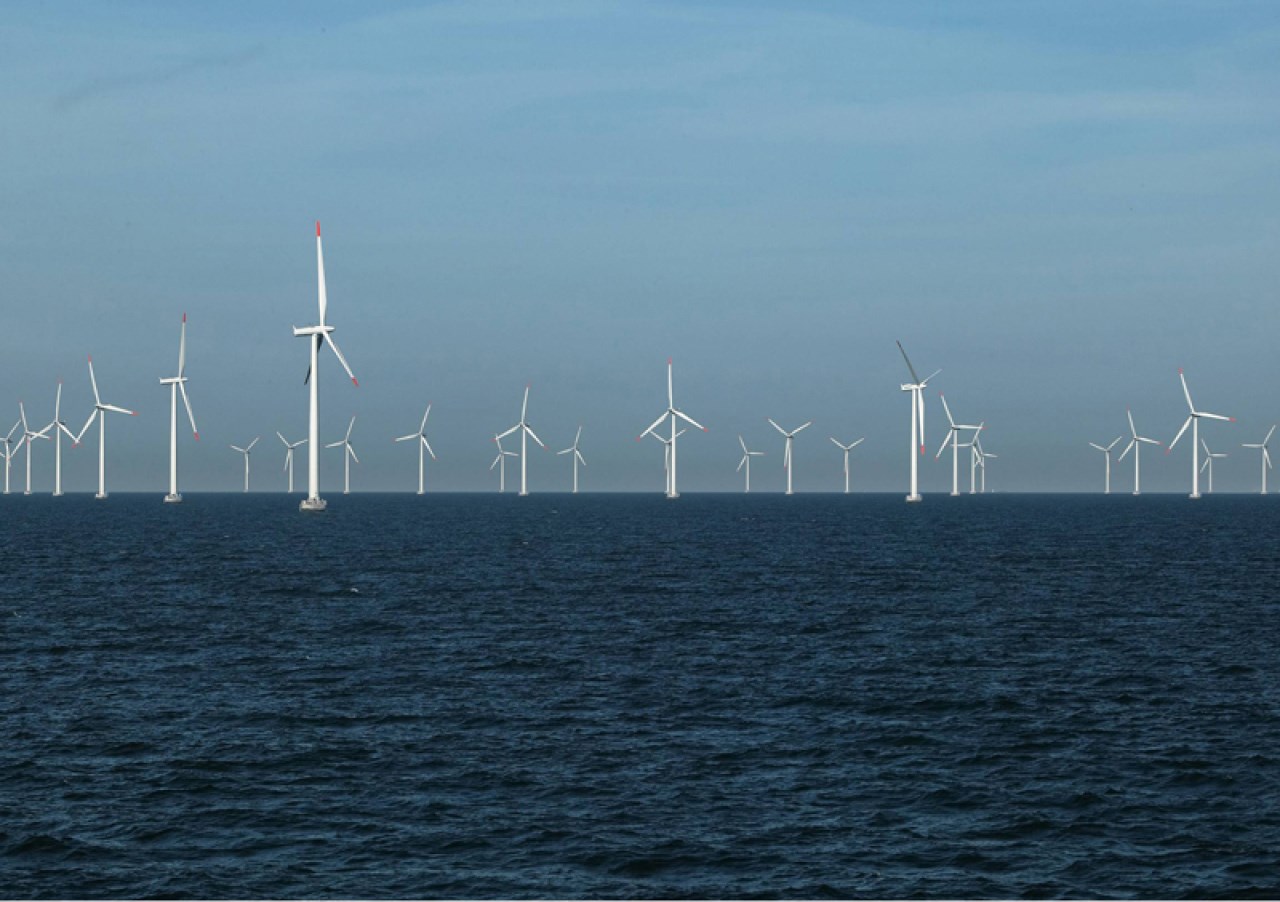
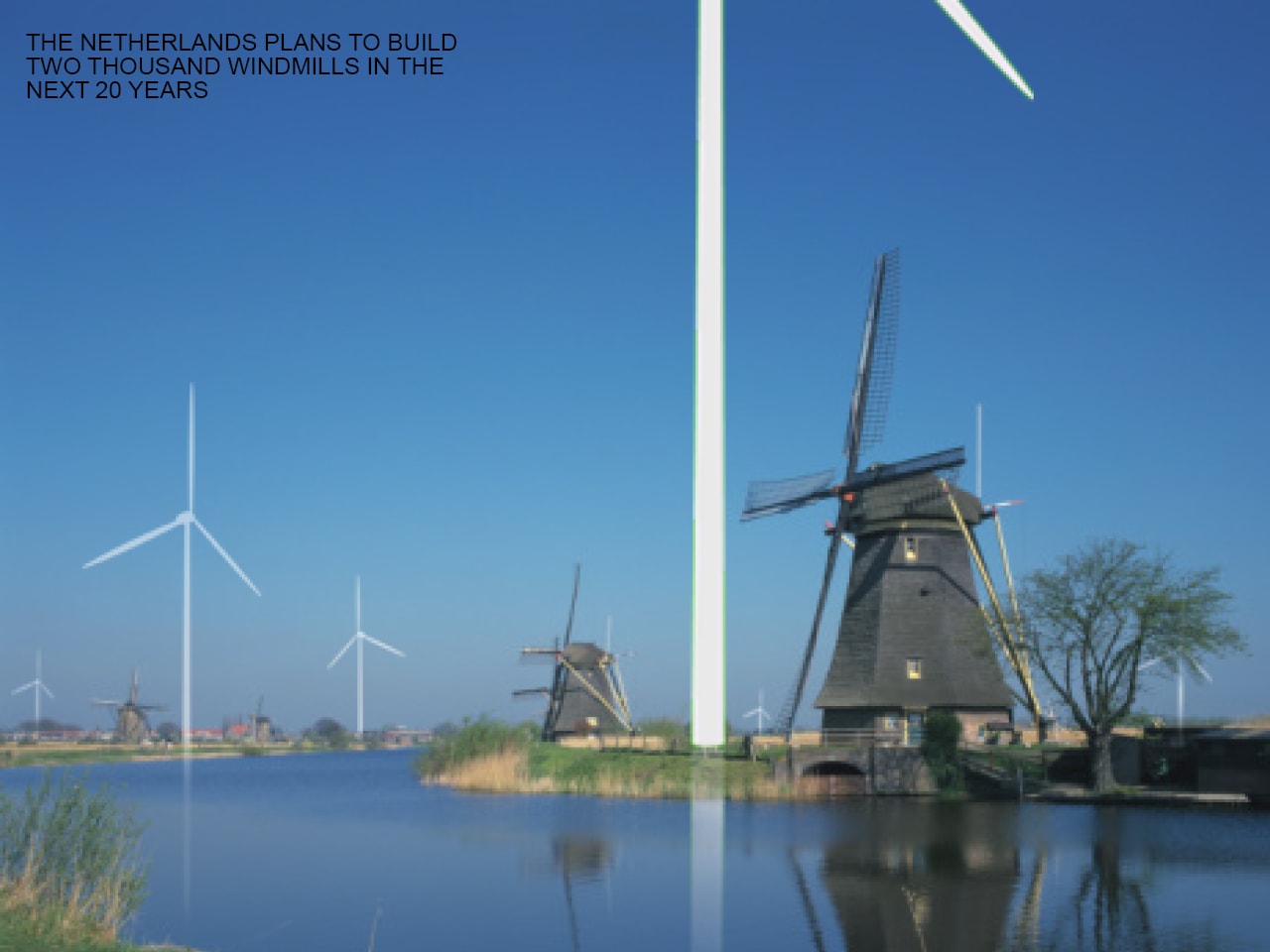
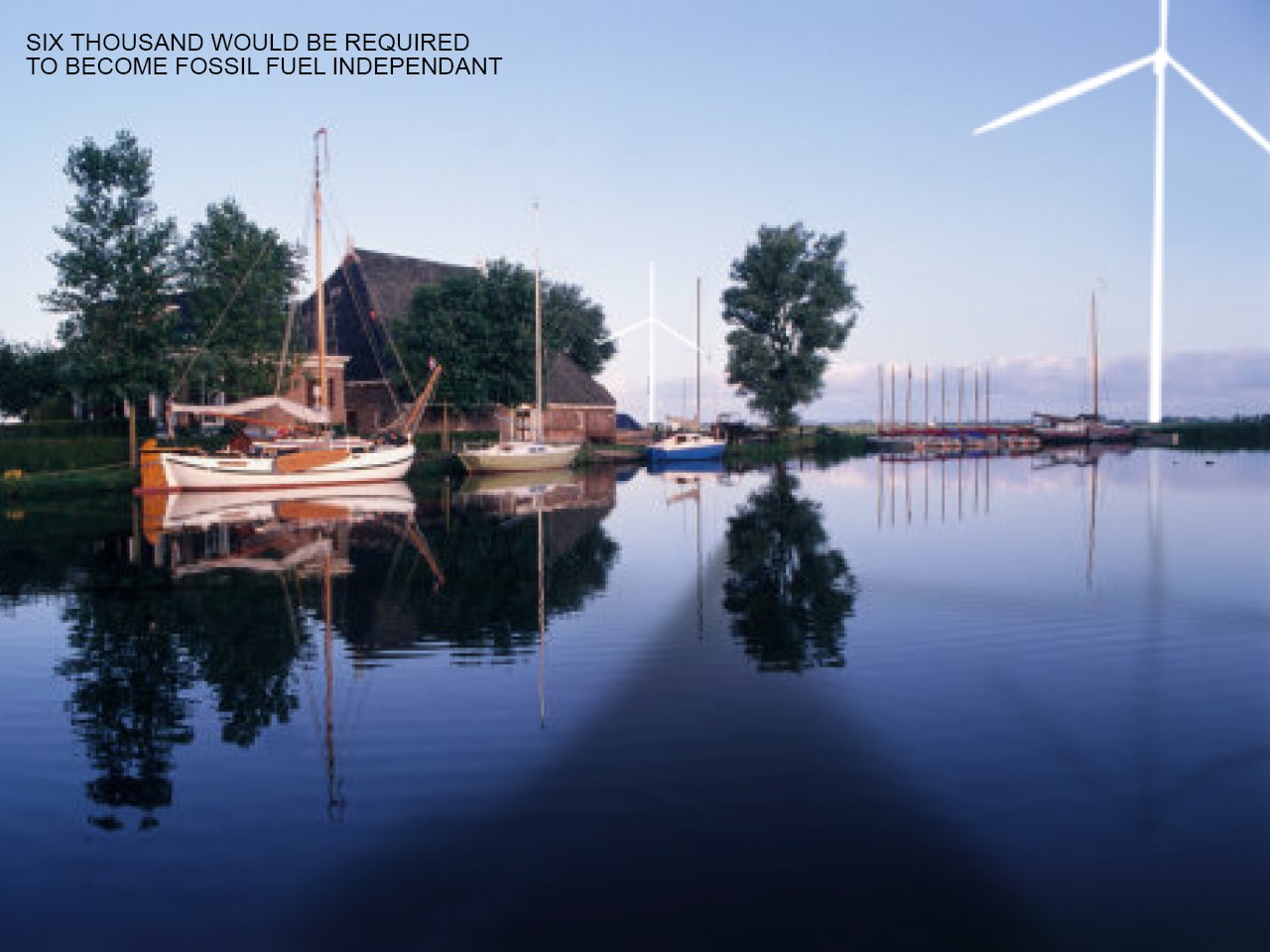
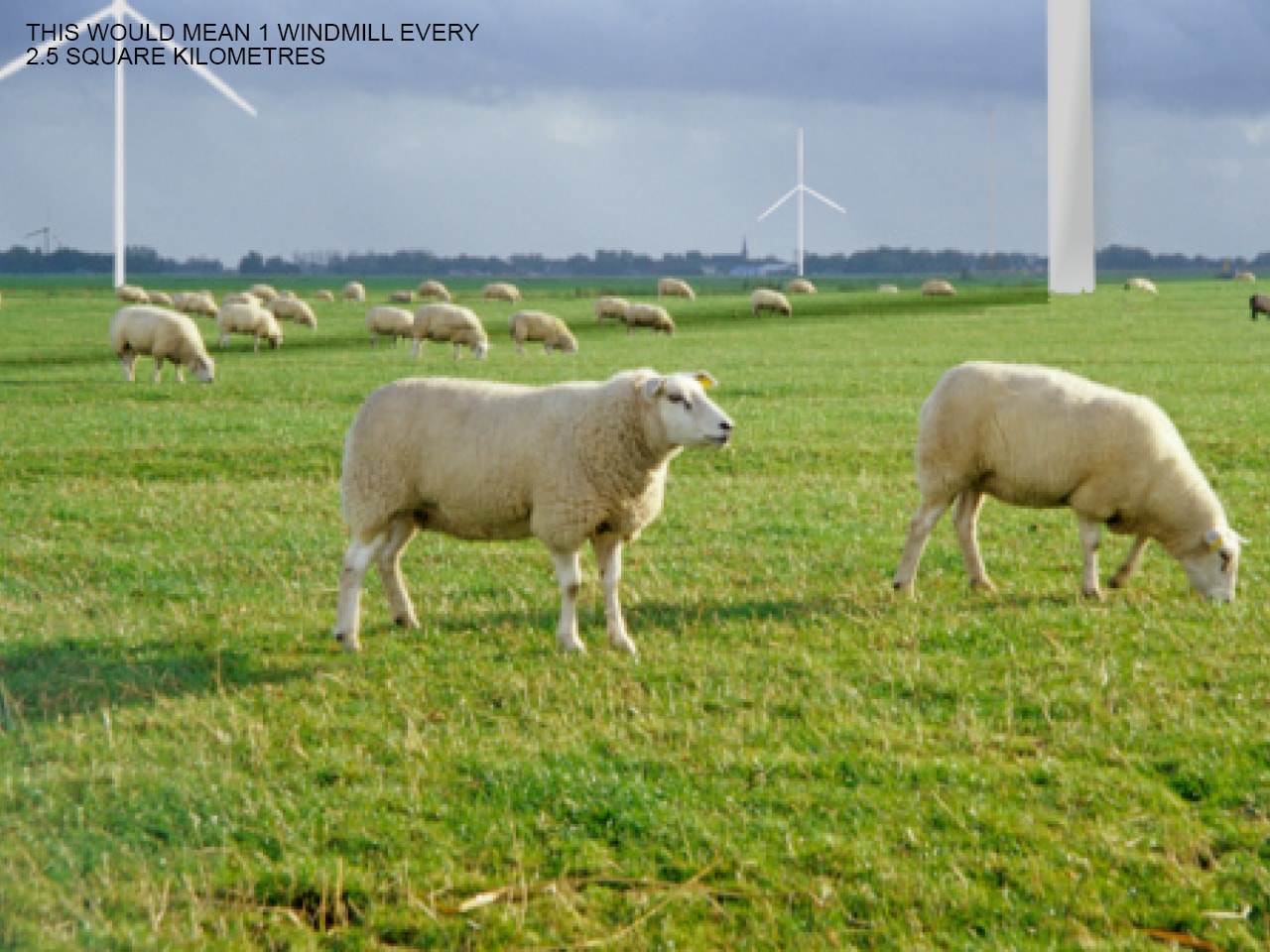
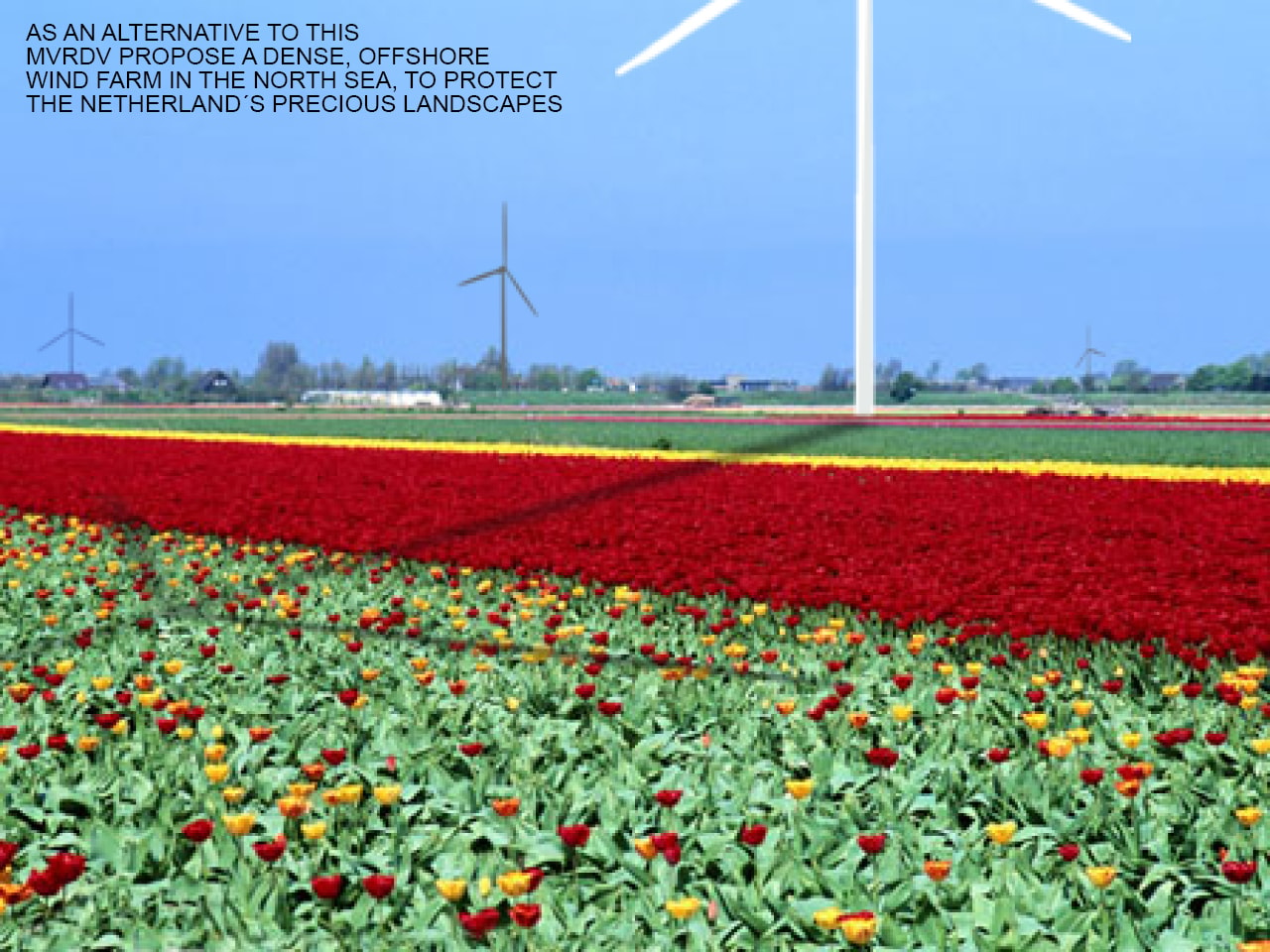
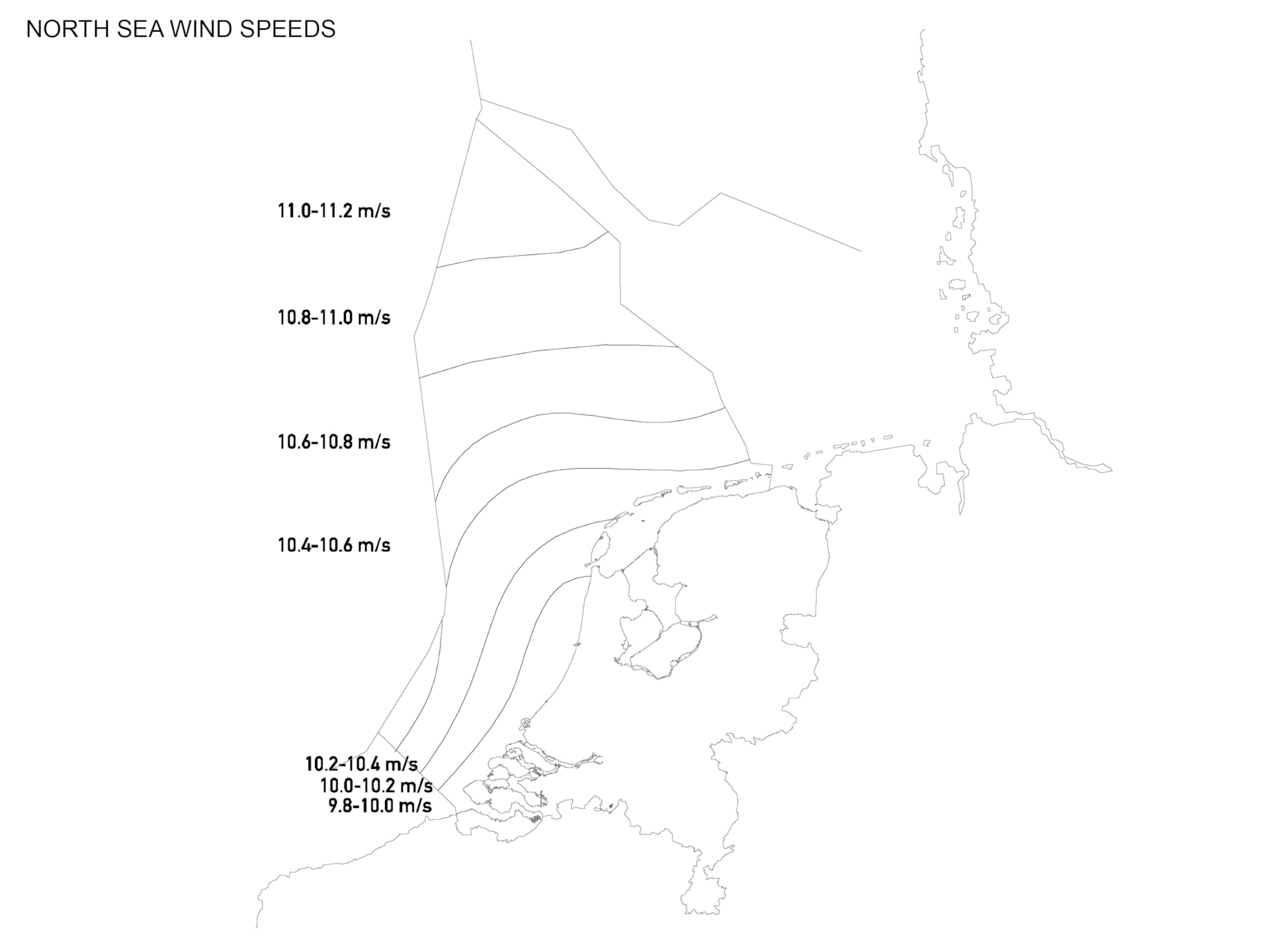
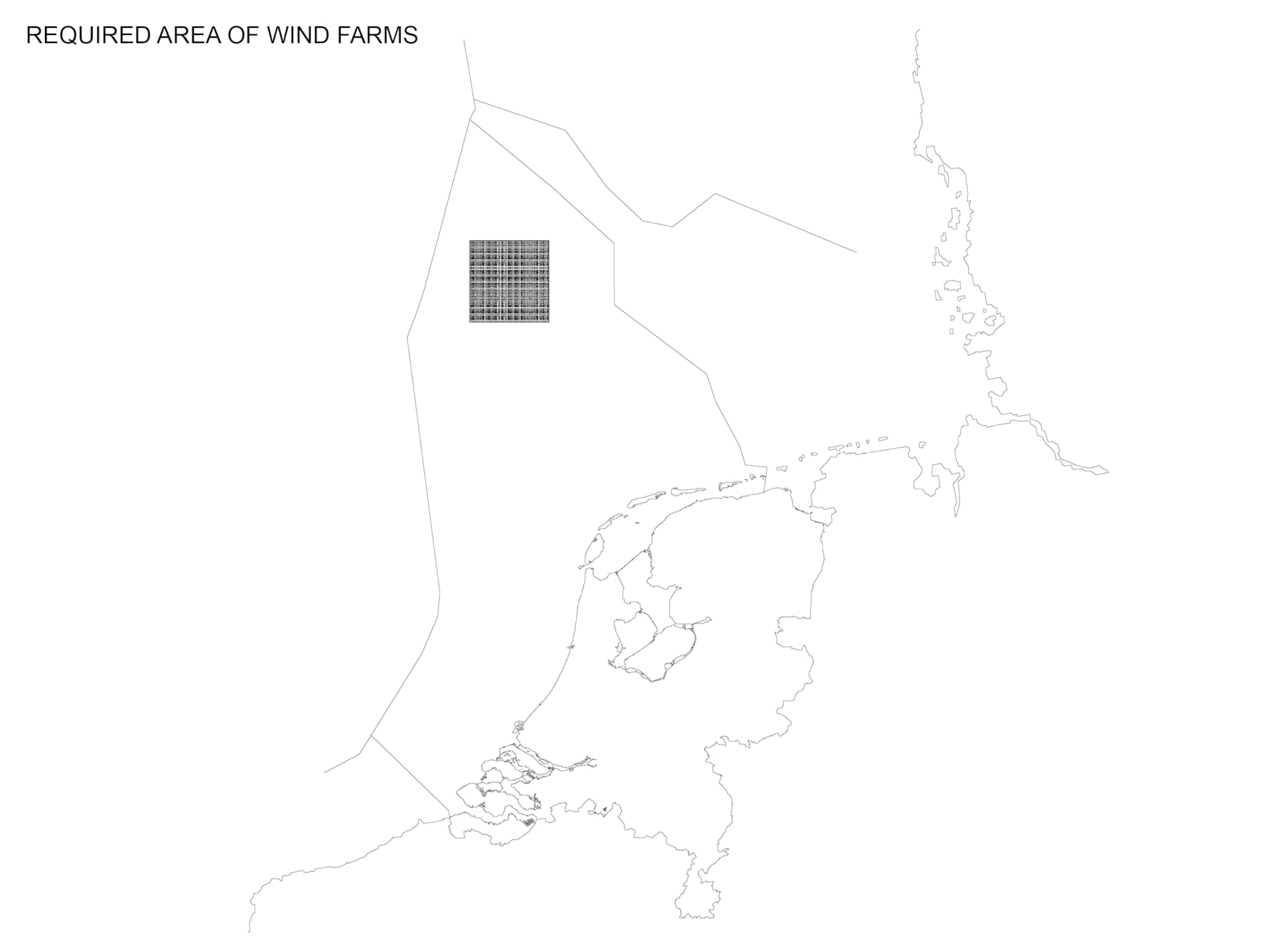
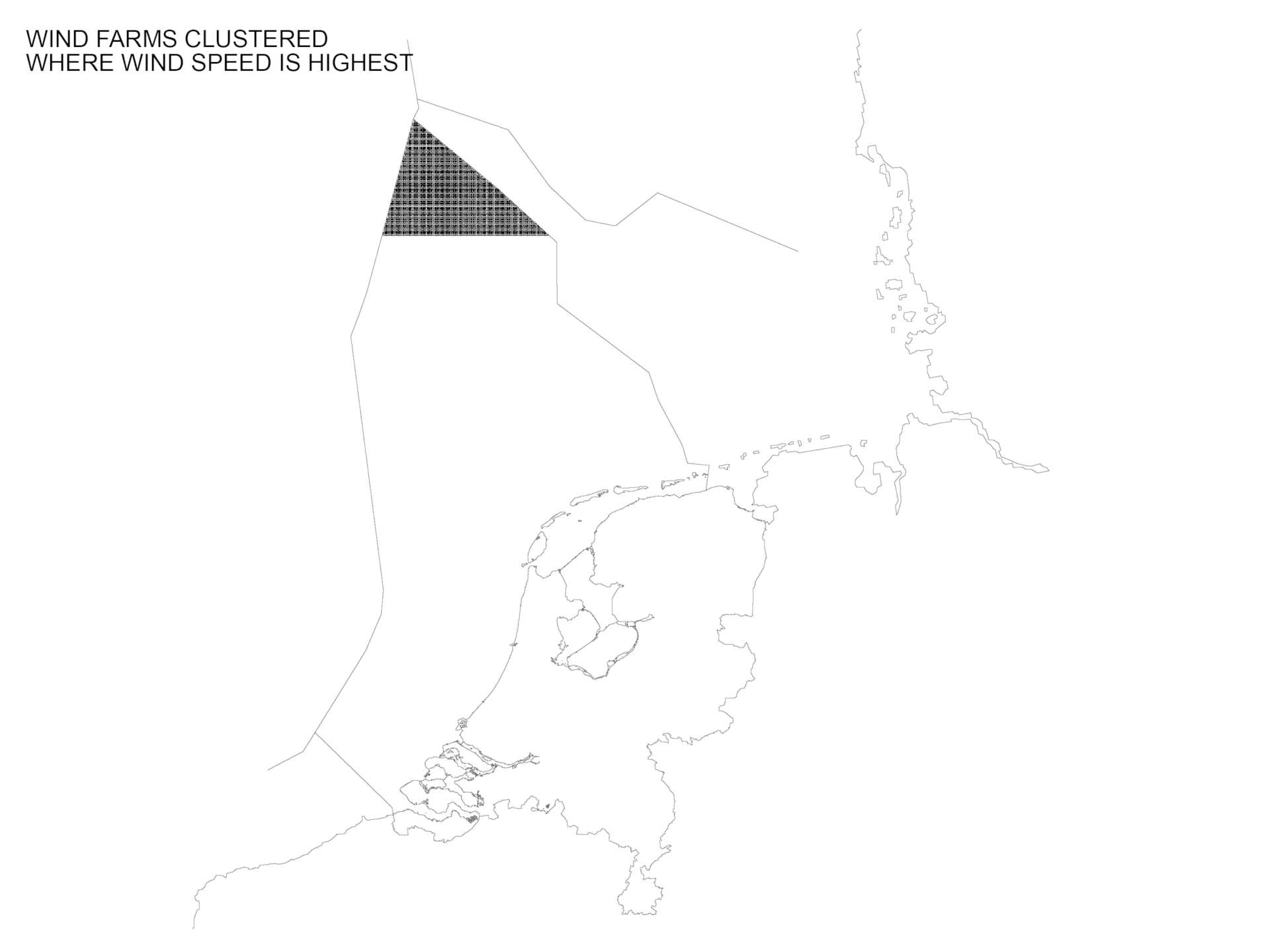
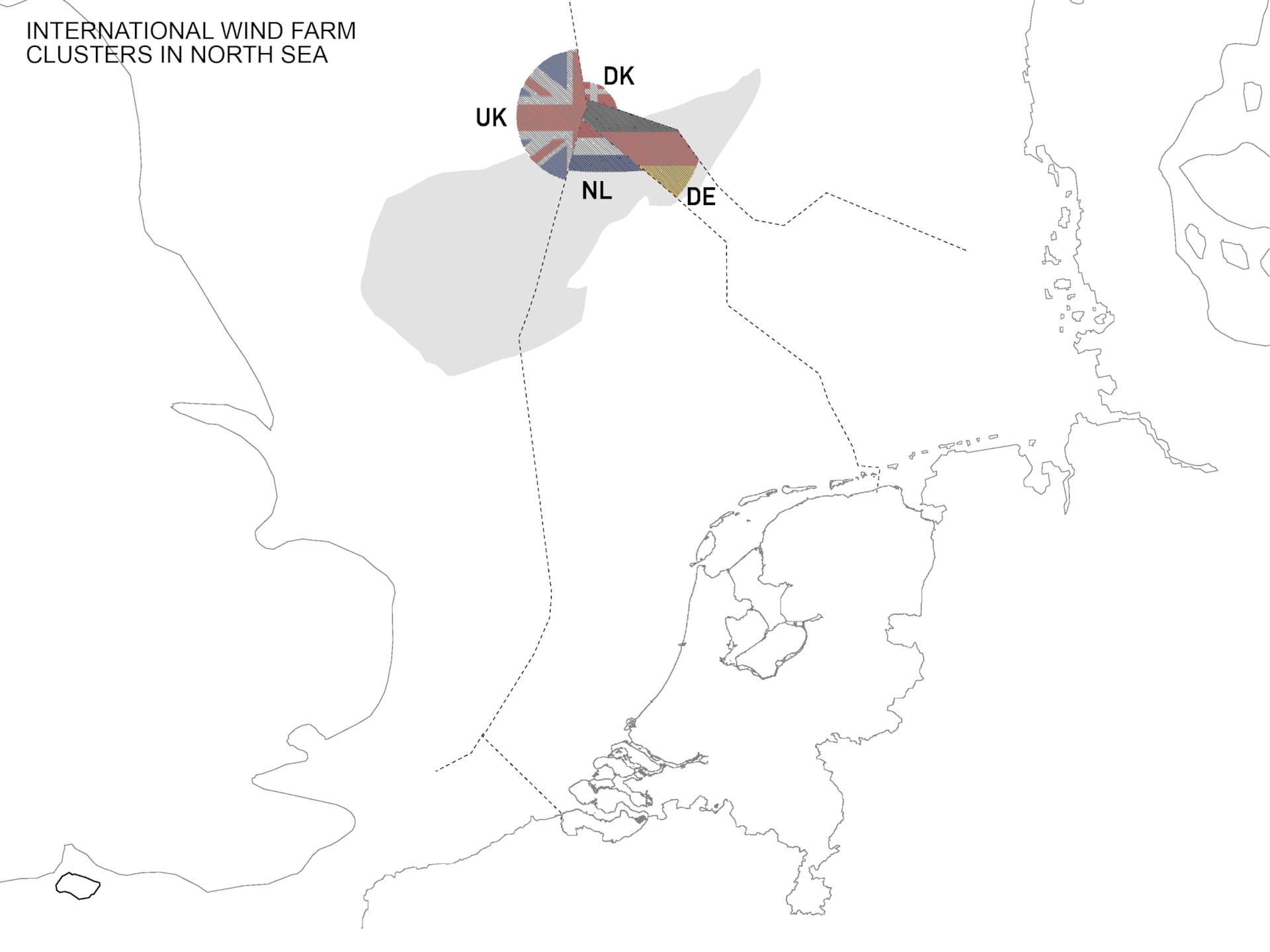

Credits
- Architect
- Principal in charge
- Design team